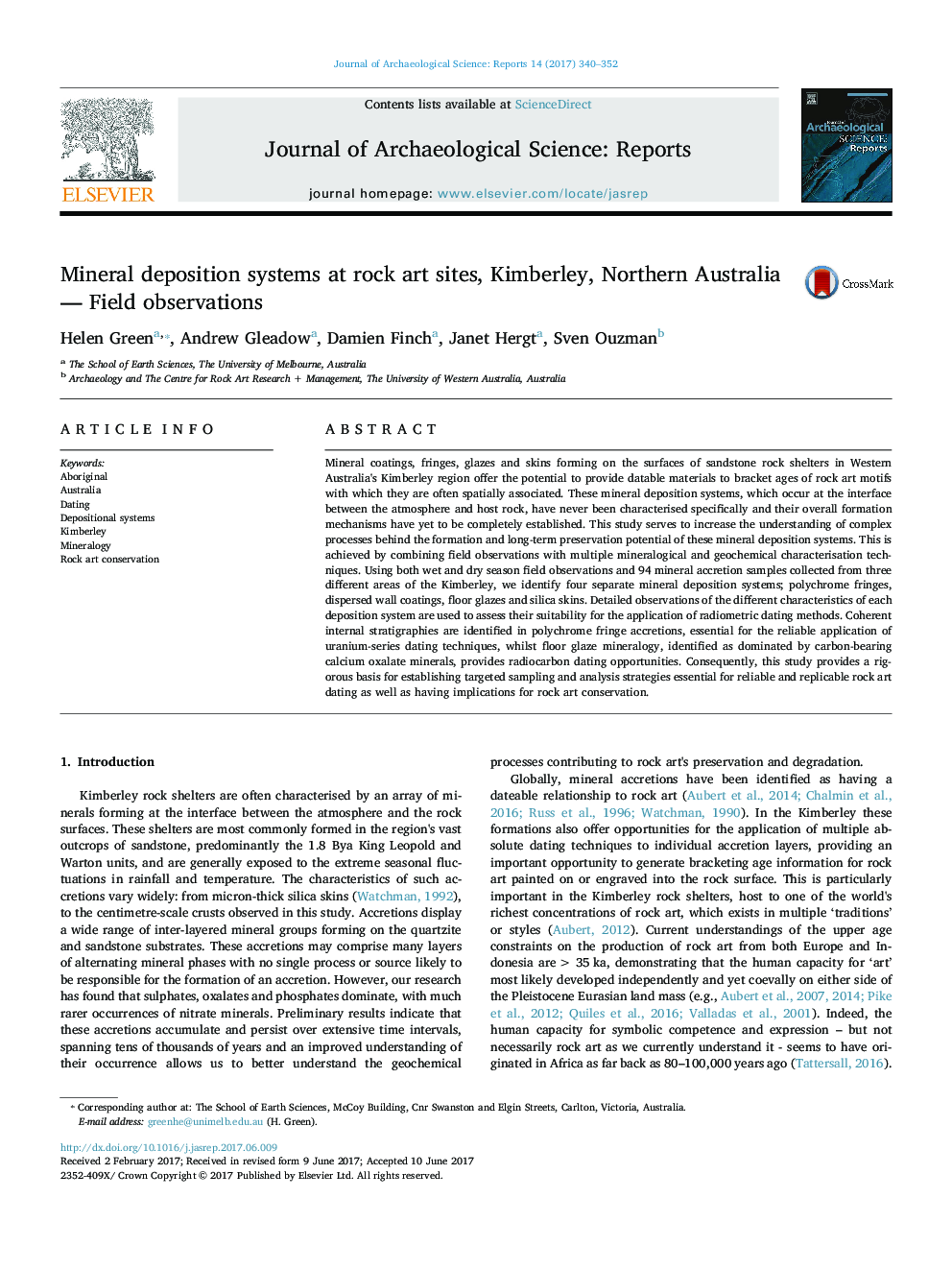| Article ID | Journal | Published Year | Pages | File Type |
|---|---|---|---|---|
| 5112347 | Journal of Archaeological Science: Reports | 2017 | 13 Pages |
Abstract
Mineral coatings, fringes, glazes and skins forming on the surfaces of sandstone rock shelters in Western Australia's Kimberley region offer the potential to provide datable materials to bracket ages of rock art motifs with which they are often spatially associated. These mineral deposition systems, which occur at the interface between the atmosphere and host rock, have never been characterised specifically and their overall formation mechanisms have yet to be completely established. This study serves to increase the understanding of complex processes behind the formation and long-term preservation potential of these mineral deposition systems. This is achieved by combining field observations with multiple mineralogical and geochemical characterisation techniques. Using both wet and dry season field observations and 94 mineral accretion samples collected from three different areas of the Kimberley, we identify four separate mineral deposition systems; polychrome fringes, dispersed wall coatings, floor glazes and silica skins. Detailed observations of the different characteristics of each deposition system are used to assess their suitability for the application of radiometric dating methods. Coherent internal stratigraphies are identified in polychrome fringe accretions, essential for the reliable application of uranium-series dating techniques, whilst floor glaze mineralogy, identified as dominated by carbon-bearing calcium oxalate minerals, provides radiocarbon dating opportunities. Consequently, this study provides a rigorous basis for establishing targeted sampling and analysis strategies essential for reliable and replicable rock art dating as well as having implications for rock art conservation.
Related Topics
Social Sciences and Humanities
Arts and Humanities
History
Authors
Helen Green, Andrew Gleadow, Damien Finch, Janet Hergt, Sven Ouzman,
